Pipeline Valves—Always Ready
From time to time, we will re-post particularly well-received articles that have previously run on VALVEMagazine.com so that those who might have missed them will be able to catch up on the best of the best.
According to Hart Data and Mapping Services, the United States has over 700,000 miles of crude oil and natural gas pipelines—about 100,000 miles of crude onshore pipelines and over 600,000 miles of onshore gas pipelines. This number stands to greatly increase as drilling in the various shale plays across the continent occurs. These seemingly endless strings of pipe have one thing in common: They all contain large numbers of valves optimized for pipeline operating conditions.
WHAT’S IN A PIPELINE?
Both quarter-turn and multi-turn block valves as well as check valves are used in pipeline service. Those built for gas or crude oil pipeline service are designed and tested in accordance with the American Petroleum Institute (API) specification 6D “Pipeline Valves.” The document, which is also published by the International Organization for Standardization as ISO 14313, includes requirements for gate, ball, check and plug type valves. Prior to the mid-1950s, the choice of valve for use in pipeline blocking applications was easy—gate valves were used because the pipeline ball valve had not been invented yet. Some plug valves also were used back then, but the majority of the designs for these valves were reduced-port type that were not piggable.
The term “piggable” has nothing to do with breakfast meat choices. Rather, it means being “pig-capable”—in other words, the devices designed to clean or inspect the interior of the pipeline (the “pigs”) also may be passed through the bore of the valve without catching on a reduced bore or other interior projection in the valve. A requirement in API 6D gate valves is that their inside bore dimensions are precisely specified to allow this passage of pigs.
“Some companies are staunchly entrenched in the gate valve,” according to David Fehrenkamp, a senior sales engineer with Cameron. He also adds that “in many natural gas pipeline operations, quarter-turn has taken over 100%.”
So why do many pipeline owners favor the gate valve for pipeline service? Product pipelines that carry fluids such as gasoline, distillates, diesel fuel and other finished petroleum products are a popular place for the rough and ready gate valve. “We use slab gate valves for most of our main line valves, but we do use expanding gate valves on our product line from Texas City to Pasadena,” says Billy Daigle, maintenance services specialist for Marathon Pipe Line LLC (MPL). “We use expanding gate valves for station isolation valves and pig launchers. Pig launcher and receiver service is harder on valves because of the debris from the pigging operation, so we choose expanding gates because of their toughness,” he adds.
The quarter-turn vs. gate valve debate gets hotter when cost becomes the prime factor for selection. The quarter-turn trunnion pipeline ball valve is much cheaper to make than the jumbo-sized gate valves, with their large and expensive body castings. Another factor that tips the pendulum toward quarter-turn pipeline valves is the availability and delivery of quarter-turn products. Because drilling in the shale plays across the country is exploding in terms of how fast it’s occurring, Fehrenkamp says the requests from customers for delivery time is “rush, rush, rush, I need it now!” A domestically produced trunnion pipeline ball valve can be built in roughly four weeks, which is about the time needed to get a good gate valve casting under the luckiest of circumstances. An additional four to six weeks might then be required to complete the gate valve machining, assembly and testing.
Some explanation is in order when speaking of pipeline gate valves. Gate valves used in this service are different from the wedge-type gate valves common in the downstream petrochemical and refining industries. The pipeline gates come in two basic types: slab and expanding wedge. The slab type utilizes a large slab that floats slightly in the valve body and seals downstream with the aid of upstream pressure. Spring-loaded seats are often employed to increase the sealing efficiency. The expanding gate, on the other hand, uses a split-disc design and separator mechanism that tightly expands the gate both upstream and downstream as the valve is closed. This type then reverses the process upon opening. The tighter closing design enables the valve to seat more effectively at lower pressures.
A QUESTION OF INTEGRITY
Valve integrity along with pipeline integrity is of prime importance to the pipeline owner as well as those who live and work close to the line. A complex formula for risk assessment is used to guide pipeline operators with inspection programs. The assessment criteria include the product, age of the pipeline, and proximity to population centers, local housing and occupied structures. The pipeline itself must be inspected at specified intervals. This line inspection is usually performed by “smart pigs,” complex devices that roll through the line to perform radiography, remote visual, ultrasonic evaluation and other inspections.
Proper valve maintenance is always vital, and pipeline valves are no exception. Since most pipeline valves have a seat sealant injection feature to facilitate tight closure, the sealant must be properly introduced into the seat seal area. New valves typically require more sealant top-off than those that have been in operation for a year or two.
Because of the importance of proper pipeline valve repair, a specification that describes the repair procedure is in place: API 6DR, “Repair and Remanufacture of Pipeline Valves.”
HOW PIPELINES WORK
Understanding how pipelines operate provides a better understanding of how valves are used in pipeline service. Major pipelines receive input from either smaller gathering lines, tank farms or, in the case of finished products, refineries and petrochemical plants. Because of friction losses, the arriving pressure of the fluid is much too low to provide enough energy to send the product very far through the line. Most transmission pipelines in the United States operate at maximum pressures of less than 1440 psi. Common maximum target pressures range from 700-725 psi and 1300-1400 psi, which equates to ANSI classes 300 and 600 respectively. These maximum pressures would only be found immediately downstream of pumps or compressors.
Because of the pressure drop in the line, booster pumping stations at intervals along the line are needed. In the case of a liquid such as crude oil, a minimum pressure of about 25-50 psi is needed for the suction side of the booster pumps to operate. Each booster pumping station is equipped with manifolds containing many valve types, including gate, ball, check, and in areas where pigging is not required, reduced port, lubricated plug valves. Additionally, control valves often are used to regulate flow from the stations.
The most common pressure class for pipeline transmission lines is class 600, which has a working pressure of 1440 psi. The valve ratings are in accordance with The American Society of Mechanical Engineers (ASME) standard B16.34 and API 6D.
Several factors influence valve spacing, including: 1) the amount of potential fluid leakage, 2) the impact of a release, 3) future development in the pipeline area, and 4) the time required to blow down (empty) an isolated section. Other criteria include how close the line is to occupied buildings and houses. According to B31.4, the distance between block valves could be as little as four miles apart for a gas pipeline.
Additionally, check valves may be installed on grades and the downstream side of rivers and streams for more protection from backflow conditions in case of a line breach.
Many block valve installations are outfitted with automatic shutdown controls. These controls are set to close the valve if pressure or flow rates change, indicating a possible breach in the line. By having these valves spaced throughout the line, the amount of potential fluid leakage that might occur during a line break is limited. Additionally, many pipeline valves are designated as emergency shutdown valves (ESD), which are remotely operated from the pipeline control center.
These block valve location requirements account for the numerous small, fenced-in valve installations visible when driving around areas with many pipelines—numerous pipeline block valves are located above the ground for easy maintenance. However, some are buried, with only the operating mechanism and auxiliary lubrication and bleed lines showing. These installation areas used to be the exclusive domain of gate valves. However, today welded body trunnion-mounted ball valves are very popular, especially for clean natural gas transmission lines. The unique welded body construction eliminates the potential body-bonnet leak path, while the only remaining leak path is up through the packing area.
Though fugitive emissions (FE) leakage has been a focal point in the refining industry for over 20 years, the upstream and midstream markets have been fairly immune from FE scrutiny. However, that situation is changing. According to MPL’s Daigle, “LDAR [leak detection and repair] for pipelines is becoming popular and required, especially since packing leaks are the most common leaks we deal with.”
One place where emissions of any type are unacceptable to almost everyone is in undersea pipelines. Because they are surrounded by water and vibrant marine life, undersea pipelines certainly have their own set of challenges. However, there are other key differences from on-land pipelines that affect design, including the design of the valves attached to the pipelines.
For example, undersea pipelines that connect wellheads to gathering points often operate at much higher pressures than their onshore counterparts. It is not uncommon for these lines to see 10,000 psi. Valves designed for this submerged service are critical, purpose-built flow control devices that absolutely must work properly when called upon to operate. Because of the unique undersea environment, standard API 6D requirements are not deemed tough enough, so a special underwater valve specification was written to cover these products: API 6DSS “Specification for Subsea Pipeline Valves.”
TESTING
Although interior pressures are also quite high in subsea pipelines, it is sometimes the outside pressure from the extreme depths that introduces the most stress on valves and piping. As a result, pipeline valves designed for installation at great depths are often tested in a hyperbaric chamber, where extreme pressure is exerted on the outside of the valve, while the inside is sealed against the external pressure.
All pipeline valves receive seat and shell tests per API 6D or 6DSS, not unlike their downstream counterparts, which are usually tested in accordance with API 598, “Valve Inspection & Testing.” One difference between the two testing documents is that, with API 6D pipeline valves, the holding times for the tests are much longer. For example, a 24-inch valve shell tested per API 598 requires a five-minute duration, while the same size valve tested per API 6D requires a 30-minute duration. These longer holding times for pipeline valve tests are often extended into hours by the supplementary test requirements of many pipeline owners.
While pipelines and pipeline valves lie mostly invisible beneath six feet of earth or under 600 feet of ocean, they are nonetheless highly “visible” when an accident occurs. As a result, pipeline valves are closely scrutinized members of the valve family. They are built to tougher standards and must work every time because they must protect lives and property that lie near their installations. Pipeline valves could borrow the Latin motto of the United States Coast Guard, which is “Semper Paratus,” which means: always ready.
Greg Johnson is a contributing editor to Valve Magazine and president of United Valve (www.unitedvalve.com), Houston. Reach him at greg1950@unitedvalve.com.
RELATED CONTENT
-
Valves in Space
All of these valves need to be built to precise fits and finishes and to stringent performance requirements because “On a spacecraft, everything has got to work. If it breaks, you’re done.”
-
Dealing with Sand Erosion in Control and Choke Valves
Sand erosion in control and choke valves is a significant consideration offshore.
-
The Basics of Eccentric Plug Valves
Wastewater systems present many challenges to pumps and valves because the flow can contain grit, solids and debris, depending where in the process the equipment is located.




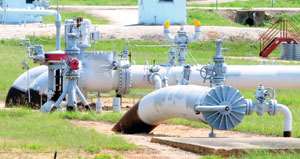
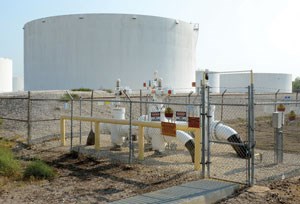
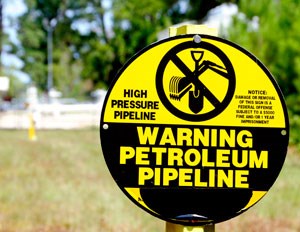
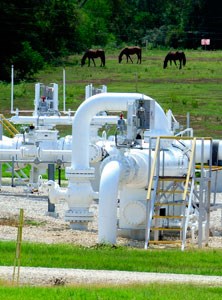
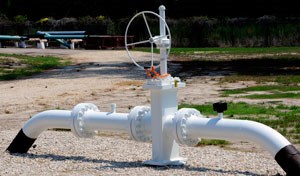







 Unloading large gate valve.jpg;maxWidth=214)